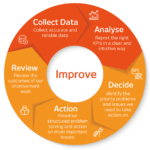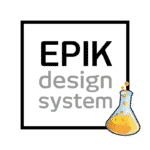Insider Tips from an OKRs Coach
OKRs and KPIs go together ‘hand in glove’. In this article Ben Lamorte of OKRs.com gives us some practical examples of OKRs. Check out his introduction to OKRs – ‘Taking KPIs to the next level with OKRs‘ in his earlier blog for a bit of background on OKRs.
OKRs, being clear on terminology
Before we explore how best to rollout Objectives and Key Results (OKRs), it is critical to get a basic understanding of the language we’re using. The best way to learn the language of OKRs is to look at good examples that follow best practices, distinguish between the types of key results and define terms. Let’s start with some examples of OKRs that follow best practices.
Example 1: Business Operations
This set of OKRs includes 1 objective (O) and 3 key results (KRs):
O: Create a metrics-driven culture where everyone can connect and quantify their contributions at work
KR: 20 team leaders define 3 objectives, each with a key result associated with a company-level goal in a shared Google Doc by end of December.
KR: CEO-approved OKRs for 20 teams by Jan 15.
KR: Progress documented on all KRs including explanations in cases where no progress was made by end of Q1 2015.
Example 2: People Operations
This set of OKRs includes 2 Os. The first objective has 2 KRs and the other objective has 3 KRs:
O1: Performance Management: Complete a review process for every individual that is not only efficient, but also enables everyone to do a better job
KR: 40 performance reviews completed and delivered by end of June.
KR: Get at least 1 positive documented response from 10 employees to the open question “Describe a specific example where the performance management (review/OKRs) enabled you to do a better job by end of July
O2: Employee Satisfaction: Measure and Improve Employee Satisfaction
KR: Improve 1-question employee satisfaction score by 5% compared to June 2014 baseline by end of Q3
KR: Improve 1-question Employee Net Promoter Score by 5% as compared to June 2014 baseline by end of Q3
KR: Improve “How likely you are to be working here” survey score by 5% as compared to June 2014 baseline by end of Q3
Example 3: Engineering Team
While the Engineering team had several objectives, I’m including the most interesting objective and its 3 KRs here as an example.
O: Sales Support: Measure and improve engineering’s support of sales
KR: Document all engineering engagements with $100k+ prospects
KR: Obtain a baseline on the technical pass rate metric by end of Q2
KR: 60% of account managers in 1 region trained and certified on product X selling technique by end of Q2
Now that you’ve seen some examples of OKRs, let’s zoom in on KRs. Nearly half my OKRs coaching time is spent defining and refining key results so that they are clearly measurable. As an OKRs coach, I find it useful to know that KRs tend to take three distinct forms: 1) baseline metric, 2) target metric, and 3) milestone.
1: Baseline Metric Key Result
An Accounts Payable department in the early stages of deploying OKRs realizes that the number of invoices received is a key indicator that can be used when measuring the company’s efficiency and scalability objective to reduce G&A as a percent of revenue. However, no one is currently tracking the number of invoices processed. So, a key result takes the form:
KR: Count and report the number of invoices received each month in Q4
This is a baseline metric key result, because it is considered to be a very important metric to track, but there’s no historical data available. In this case, setting a target value for the key result is generally not required. In general, targets should only be set once we have established a baseline.
2: Target Metric Key Result
There are three types of target key metric results: 1) positive target metric, 2) negative target metric, and 3) threshold target metric.
2.1 Positive target metric
The VP of People Operations has 40 total employees on her team. Since everyone is required to complete and document performance reviews by the end of June, a key result takes the form:
KR: 40 reviews completed and delivered by end of June
This is a target metric since it specifies a numerical value target. It is a positive target metric since it is good to go in a positive direction. That is, 39 is better than 1.
2.2 Negative target metric
The VP of Accounting produces financial statements each quarter with a total of just 12 material errors over the last 10 quarters for an average of 1.2 material errors per quarter. The CFO feels 1 is a good target and 2 errors is acceptable, but 3 or more material errors in one quarter is not acceptable. The VP wants to ensure reports meets accurate standards, so a key result takes the form:
KR: No more than 2 material errors in quarterly financial statements in FY 2015
This is a target metric since it specifies a numerical value target. It is a negative target metric since it is good to go in a negative direction. That is, 0 is better than 2.
2.3 Threshold target metric
The VP of a consulting team provides services billed on an hourly basis. In order to be cost effective, the VP wants her team to be billing at least 60% of their time each month. She calls this metric “consulting utilization rate.” She knows that her team needs time for internal meetings and non-billable activities. Once a utilization rate surpasses 90%, it negatively impacts job satisfaction and can even negatively impact the quality of services. So the key result takes the form:
KR: Maintain a monthly consultant utilization rate between 60% and 90% in Q4
This is a threshold target metric since it specifies an acceptable low numerical value and an acceptable high numerical value that serve as thresholds for defining the metric’s target range.
3: Milestone Key Result
The VP of Sales is responsible for opening a new office in Australia in order to establish a presence in the region. The VP is not responsible for opening multiple offices, only one, so the key results takes the form:
KR: Open a branch office in Australia with at least one full-time staff member at the office during business hours by end of Q4
This is a milestone since it cannot be set up as a metric. Note that milestone key results can and should be broken down into smaller steps such as:
- Sign lease to secure office space
- Hire full time office manager
- Translate product pricing to Australian currency
- Etc.
Here’s how we can classify each of the KRs listed in the examples above using these three types:
[table caption=”Key Result” width=”750″ colwidth=”600|150″ colalign=”left|left|left”]
Key Result,Type
40 reviews completed and delivered by end of June,positive target metric
Get at least 1 positive documented response from 10 employees to the open question “Describe a specific example where the performance management (review/OKRs) enabled you to do a better job by end of July,positive target metric
Improve employee satisfaction score by 5% compared to June 2014 baseline by end of Q3,positive target metric
Improve 1-question Employee Net Promoter Score by 5% as compared to June 2014 baseline by end of Q3,positive target metric
Improve “How likely you are to be working here” survey score by 5% as compared to June 2014 baseline by end of Q3,positive target metric
Document all engineering engagements with $100k+ prospects,milestone
Obtain a baseline on the technical pass rate metric by end of Q2,baseline metric
60% of account managers in 1 region trained and certified on product X selling technique by end of Q2,positive target metric
[/table]
40 reviews completed and delivered by end of June,positive target metric
Get at least 1 positive documented response from 10 employees to the open question “Describe a specific example where the performance management (review/OKRs) enabled you to do a better job by end of July,positive target metric
Improve employee satisfaction score by 5% compared to June 2014 baseline by end of Q3,positive target metric
Improve 1-question Employee Net Promoter Score by 5% as compared to June 2014 baseline by end of Q3,positive target metric
Improve “How likely you are to be working here” survey score by 5% as compared to June 2014 baseline by end of Q3,positive target metric
Document all engineering engagements with $100k+ prospects,milestone
Obtain a baseline on the technical pass rate metric by end of Q2,baseline metric
60% of account managers in 1 region trained and certified on product X selling technique by end of Q2,positive target metric
[/table]






